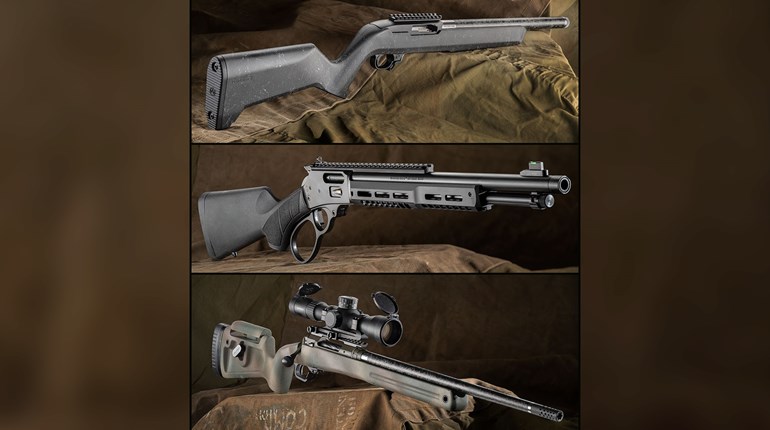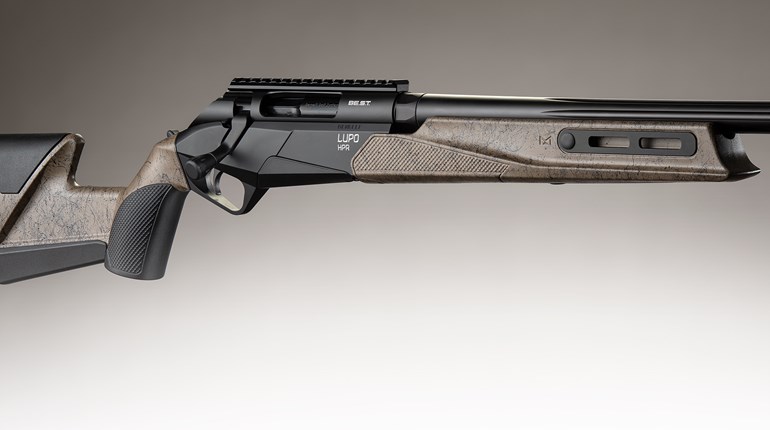
“… it is not only appropriate but essential that the NRA and the NBPRP achieve effective liaison and work closely together … The present system of funding the programs of the NBPRP and the DCM, including the same sources of budgetary support, appears to be quite appropriate.
—Arthur D. Little Report, January 1966

Amid attacks on the Civilian Marksmanship Program that began the year before when California’s attorney general openly criticized the distribution of free ammunition, the Army commissioned the Arthur D. Little research firm to conduct an in-depth study of policies and procedures. Yet despite findings that substantively endorsed the National Match framework and the co-existent relationship between the NRA, NBPRP and DCM, the landmark study was largely ignored by political adversaries.
Although the controversy included opposition to the conduct of the National Matches, the 1965 appropriation and schedule of events were not affected. Col. Sidney Carpenter returned for his third year as Match Director and oversaw range improvements that allowed for additional high power practice and matches at 200 and 300 yards. And by the end of the entire program, there were many first-time winners in the majority of the NRA events, including the national championships.

Navy Petty Officer Donald Hamilton proved his tenacity as a competitor when he finally shook the Army’s Bill Blankenship from the catbird seat and denied the defending champion a sixth straight pistol title. In 1963, Hamilton lost the championship on X count and in 1964 he finished third, but in 1965 his 2649-113X was good for his first national title and was six points better than Blankenship, who assumed the role of runner-up. Blankenship did successfully defend his National Individual Trophy title with a record 294-16X and the Army also won the National Team Trophy event while an Air Force foursome made it three years in a row where two of three championships were captured en route to the NRA team aggregate honor.
In women’s pistol competition, a Gertrude again earned national honors, although in 1965 it was Gertrude Schlernitzauer of Lowell, Michigan, not the Gertrude Backstrom who dominated the event in the late 1950s. In Schlernitzauer’s case, it was the beginning of a stretch that lasted through the 1970 National Matches where either she or 1964 champion Army Capt. Sallie Carroll won the national title. Col. Walter Walsh defended his senior title and added an interesting side note to the 1965 program when he also topped the seniors in service rifle competition. For the incomparable Walsh, deftness with firearms was something he’d been displaying at the National Matches since the 1930s when he first started winning titles in more than one discipline or, in the case of his 1939 All-Round Champion title, when he fired the high aggregate score with three guns: pistol, smallbore and high power.

There was just a little more excitement on the smallbore firing lines in 1965 when U.S. prone shooters prepared to defend the Pershing Trophy against teams from Great Britain and Canada. The sixth meeting of the teams promised to be a hard fought competition and U.S. shooters defeated Great Britain by 16 points to retain possession of the trophy. Lones Wigger shared the highest score honor, with British rifleman Adam Gordon as each put together Dewar scores of 399-24X.
The potential of the military marksmanship units was surely felt as Air Force Maj. M.G. Winstead opened the smallbore phase with a near a perfect 400-39X iron sight score at 50 yards. Marine Sgt. Ray Green won the 100-yard match while Randle Team veteran Lenore Lemanski and Larry Moore fired 400s to win the meter and Dewar matches, respectively. But the winner of the Hoppe Trophy and a Winchester 52D rifle was Master Sgt. William Krilling, a seasoned competitor from Fort Benning. Krilling earned his spurs in the frozen hills of Korea where he sniped with an MID. To his left breast pocket flap was pinned the circular International Distinguished Rifleman’s Badge and to its left was the acorn of the Army’s Distinguished Rifleman’s Badge. Krilling's 1597-111X led the field, perhaps no surprise from the first person to shoot a 3200 across the old Critchfield course in the days of the three-pound trigger pull.

Larry Wilkens let his precision shooting do the talking in any-sight competition with a 1599-126X and he had set his sights on the national title when he led off the final aggregate with a win at 100 yards. But Krilling managed to hold his own over the second two 1600 aggregates and triumphed in the end. His 4788-337X gave him an outstanding seven-point lead over Wilkens for the Critchfield Trophy, another Winchester 52, a Lyman scope, championship brassard and bragging rights as both the open and service champion. Wilkens had to settle for the civilian honor, a title last won by Rans Triggs, who in 1965 topped the seniors. Marianne Jensen bested her sister, iron-sight champion Lenore Lemanski, and any-sight champion Virginia Williams of Stanford, Connecticut, for the women’s title.
The position matches shaped up to be a gold medal affair shared by collegiate champion John Writer, who won two of the four matches, and Olympic champions Gary Anderson and Lones Wigger, who each won a match. Anderson and Wigger both won Olympic gold in 1964; Anderson won gold again in 1968 and Wigger’s second gold came in 1972, the same year Writer joined the elite group by virtue of his own Olympic gold.
In spite of Writer’s outstanding performance this year, Wigger bested him and in the process, tied Art Cook and Tommy Pool with two national position championships each. Phil Bahrman was tabbed the civilian champion, Thomas Whitaker of Norco, California, earned the junior honor, and Robert Dorian retained his senior crown.

A newcomer to the Army shooting program was Margaret Thompson. It was the first major tournament for the recent graduate of Kansas State University and as a member of the Army team she marked her debut with the women’s position crown and high Randle Team score. What’s more, she remained at Perry for high power and unseated the four-time women’s national service rifle champion, Barbara Hile. On her way to that major accomplishment, she fired a perfect score in the premier high power standing event—the Navy Cup—to become the only woman to ever win the prestigious trophy.
The top overall high power performance was turned in this year by service rifle shooter David Meredith. The Army lieutenant fired a record 796-79, just four points off a possible in the seven-match aggregate. Meredith’s accomplishment earned him membership in an exclusive club as he became the fifth of only nine shooters in National Match history to fire a service arm for the high score in the national championship. Santa Monica’s John Clerke’s 793 was this year’s high bolt rifle score while Miralotte Ickes topped the women's field for her sixth title in nine years.
Army Pvt. 1st Class Louis Behling added two more Vs to reset the bar on the President’s Match record to 150-17V, the same V-count that was logged in both the Leech and Wimbledon preliminary matches by winners Staff Sgt. Eric England and Lt. Cpl. Carlos Hathcock, respectively, of the Marines. Marine Sgt. Gilmer Murdock won the National Individual Rifle match and team honors went to the Air Force. And in the tournament-ending Infantry Trophy Match, the Marines snapped the Army’s stranglehold on the trophy.
1965 National Matches Fact
The Arthur D. Little Report listed among the advantages of the National Matches: “Individual and team achievements are a source of pride … Matches serve as an effective arena for testing, shooting techniques and training methods … Successful shooters in the National Matches add luster to their reputation which makes them more believable and effective as marksmanship instructors.”

































